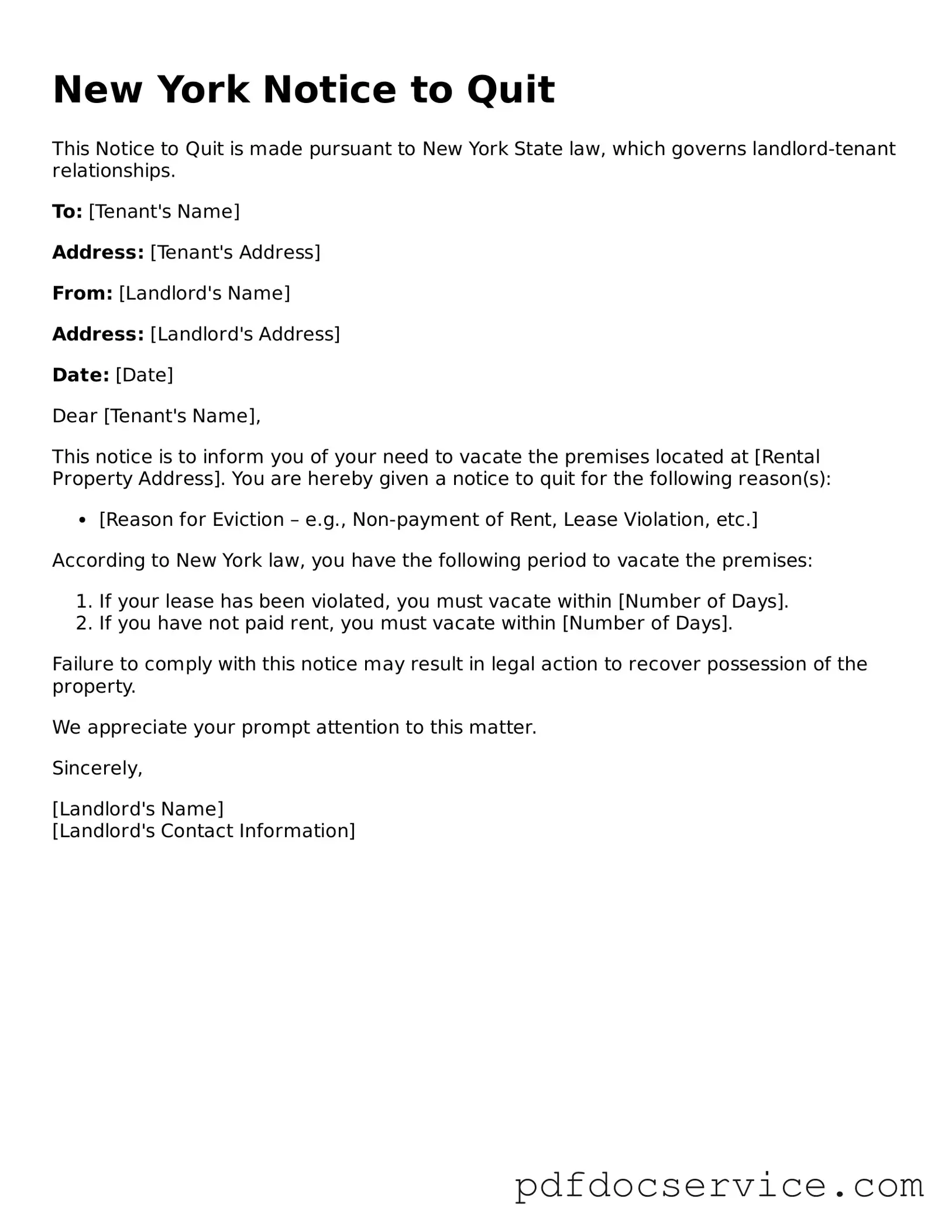What is a Notice to Quit in New York?
A Notice to Quit is a formal document that a landlord provides to a tenant to inform them that they must vacate the rental property. This notice typically arises when a tenant has violated the terms of their lease or has not paid rent. It serves as the first step in the eviction process.
When should a landlord use a Notice to Quit?
A landlord should issue a Notice to Quit when a tenant fails to comply with lease terms. Common reasons include:
-
Non-payment of rent
-
Violation of lease terms, such as unauthorized pets or subletting
-
Engaging in illegal activities on the property
This notice allows the tenant a specified period to remedy the situation or vacate the premises.
How long does a tenant have to respond to a Notice to Quit?
The response time varies based on the reason for the notice. Generally, tenants have:
-
14 days for non-payment of rent
-
30 days for lease violations
-
Immediate notice for illegal activities
It's crucial for tenants to read the notice carefully to understand their obligations and timelines.
Can a tenant contest a Notice to Quit?
Yes, tenants can contest a Notice to Quit. If they believe the notice is unjust or that they have remedied the issue, they can respond in writing. If the dispute escalates, it may lead to a court hearing where both parties can present their case.
What happens if a tenant ignores the Notice to Quit?
If a tenant ignores the Notice to Quit, the landlord can proceed with eviction proceedings. This usually involves filing a lawsuit in housing court. Ignoring the notice does not prevent the landlord from seeking legal action to regain possession of the property.
Is a Notice to Quit the same as an eviction notice?
No, a Notice to Quit is not the same as an eviction notice. The Notice to Quit is a preliminary step that informs the tenant they must leave the property. An eviction notice, often referred to as a "summons," is issued after the landlord has taken legal action to evict the tenant.
What should be included in a Notice to Quit?
A proper Notice to Quit should include the following information:
-
The date the notice is issued
-
The tenant's name and address
-
The reason for the notice
-
The time frame in which the tenant must vacate
-
The landlord's contact information
Clear and precise language helps avoid misunderstandings.
Do I need to send the Notice to Quit by certified mail?
While it is not legally required to send a Notice to Quit by certified mail, doing so is highly recommended. This method provides proof that the tenant received the notice, which can be important if the situation escalates to court.
Can a tenant request a written response to a Notice to Quit?
Yes, tenants can request a written response from their landlord regarding the Notice to Quit. This can clarify the landlord's intentions and help the tenant understand their options moving forward. Open communication can often resolve issues before they escalate.
